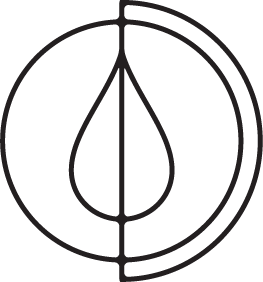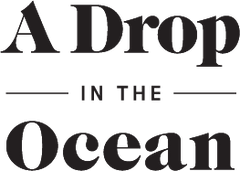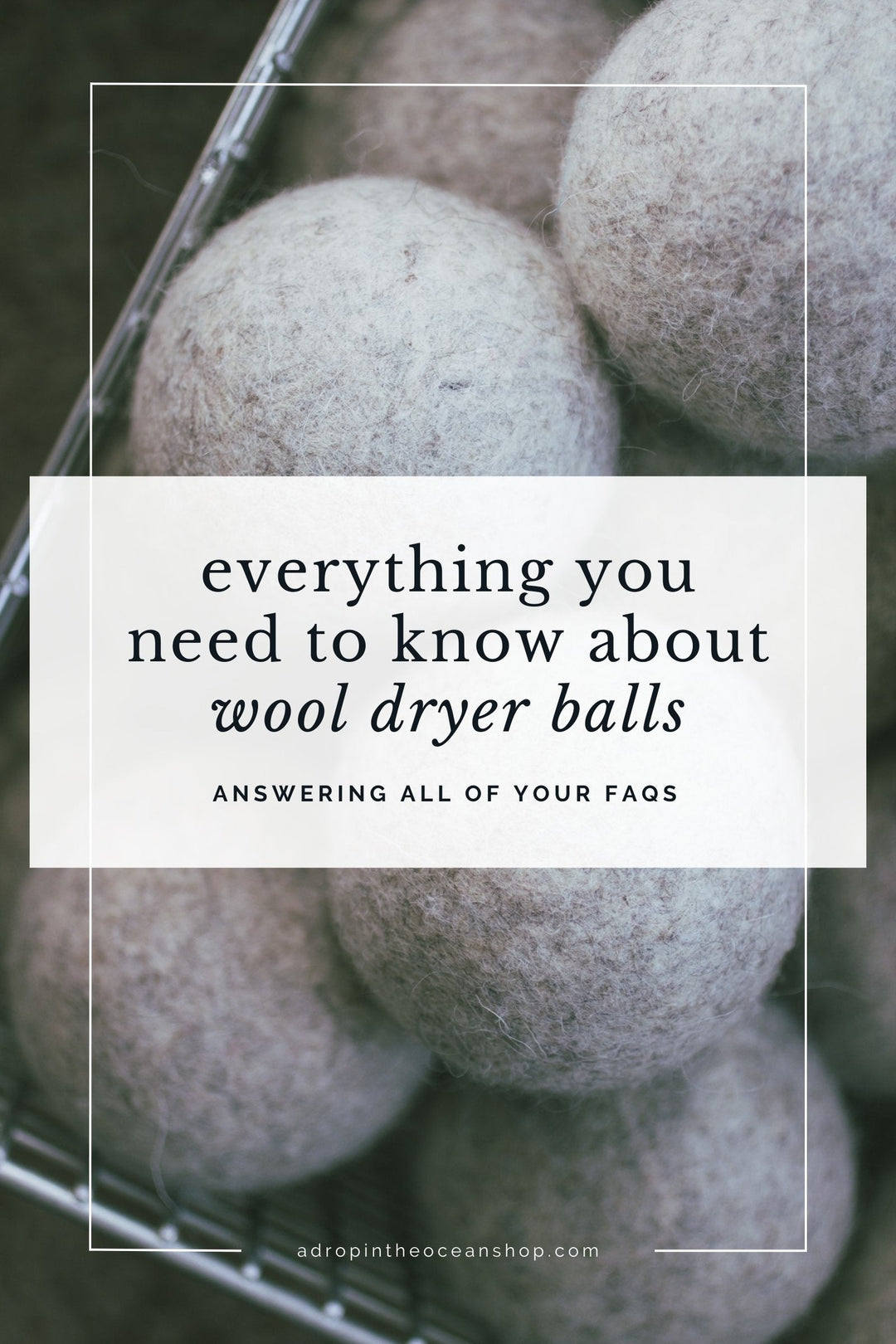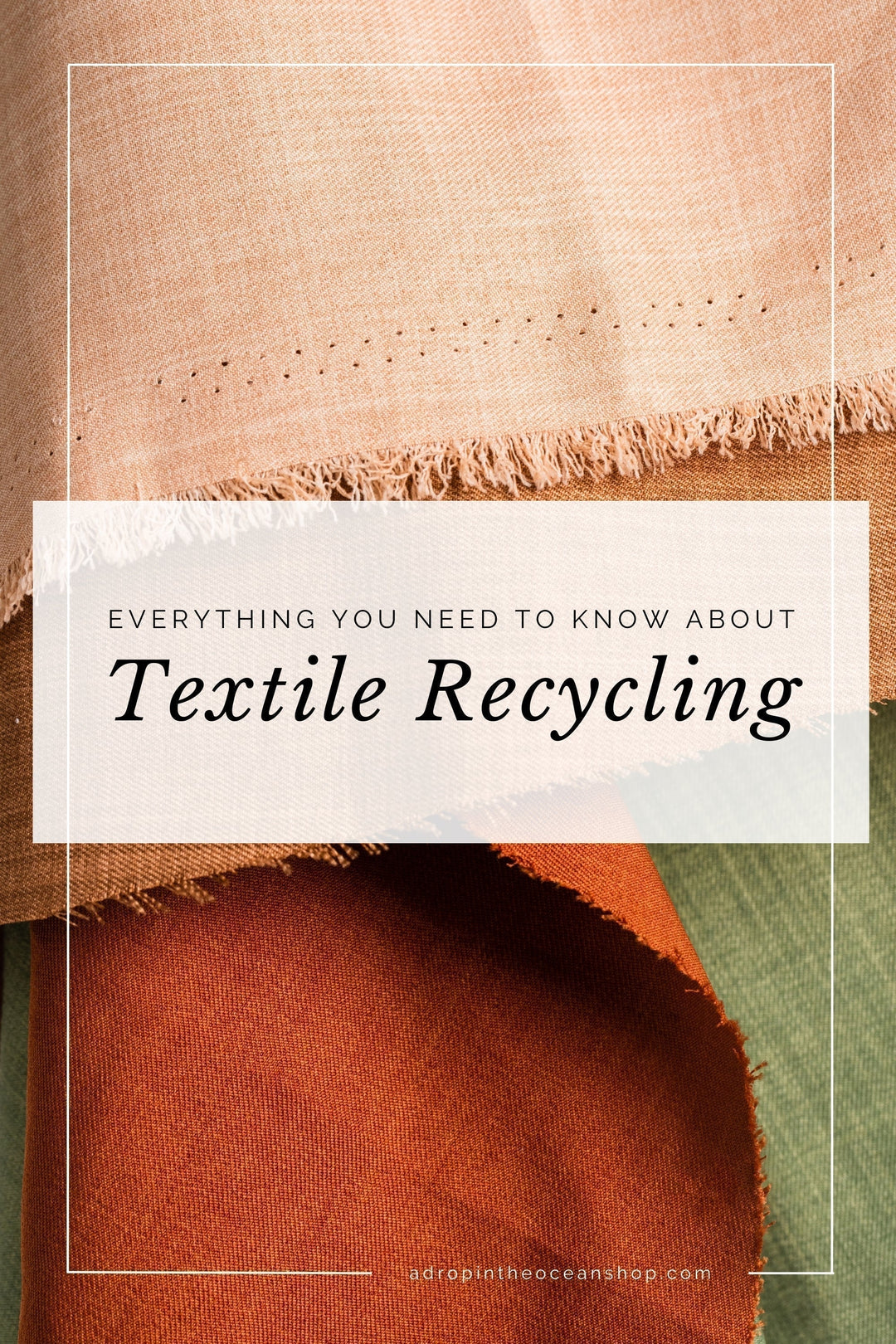In Defense of Marie Kondo (and What To Do With the Things That No Longer Spark Joy)

Yes, I am getting on the Marie Kondo and KonMari bandwagon. And I’m not just leisurely strolling onto it, I’m getting a running start and launching myself onto it with everything I’ve got in me.
I’ll admit, before a couple weeks ago I had never heard of The Life-Changing Magic of Tidying Up, or Marie Kondo, or her KonMari tidying method. I was skeptical of the new Netflix show, Tidying Up with Marie Kondo, moreso from a perspective of never really being much into home improvement shows and the like. But one evening I caved and decided to give it a shot.
I was hooked.
But I also found myself wondering about the environmental impacts of this movement sweeping the Western world, and whether the KonMari method addresses the root of the “stuff” problem - overconsumption and devaluing of our possessions. I spent hours pondering this question, and sought out the opinions of others through news articles that were flooding my news feed. When you surround yourself with the people and organizations I do, there’s never a shortageof articles floating around addressing these topics.
As I read these articles, my opinions on the matter became immensely clear to me, and from what I’ve found, the zero waste perspective doesn’t really seem to be fully addressed in many spaces yet. So, here’s my take on the subject.
*Steps up onto soap box and clears throat*
Full disclosure, I have not yet read Kondo’s book, although I do plan to. I have read articles on the differences between the book and the Netflix series, but I am aware this is not enough to fully grasp the book’s intentions. Perhaps once I read the book I will update this post with my new learnings.
On Minimalism
The KonMari method is not about minimalism. It is about mindfulness. It is about respecting our belongings and placing value back into them (sound familiar?). In Japanese culture, kami are spirits present all around us, including in inanimate objects. When we believe that something as simple as a cheese grater has a spirit and deserves respect, especially for all of the time, energy, and effort that went into that cheese grater before it reached our hands, our entire mindset changes.
These principles are similar to those of minimalism. In preparation for this post, I re-watched the documentary Minimalism. It’s on Netflix; I highly recommend it. Minimalism is not about hating stuff and living off the grid and never consuming another thing in your life. It’s about placing value into our belongings and knowing what, in turn, brings value back into our own lives.
“We welcome things into our life, but definitely with the intention of thinking about what we’re doing as opposed to consuming.”
- Jacqueline Schmidt (from the documentary Minimalism)
Interestingly, one of the biggest misconceptions of the KonMari method is that you can only keep a limited number of books. For the record, this is not true and Marie Kondo herself has tried to clear up this misconception.
"It's not so much what I personally think about books. The question you should be asking is what do you think about books. If the image of someone getting rid of books or having only a few books makes you angry, that should tell you how passionate you are about books, what's clearly so important in your life. If that riles you up, that tells you something you about that. That in itself is a very important benefit of this process."
- Marie Kondo
In the Minimalism documentary, Ryan Nicodemus is speaking to an audience and shares that people have told him “they’re not a minimalist like him” - they have a huge book collection and books bring them joy. To which Ryan responds, “Hey, keep your books.”
It’s as simple as that. Find what brings you joy, value those things, and respect them.
“I have to justify to myself - not anyone else - does this add value to my life? And if not, I have to be willing to let go.”
- Joshua Fields Milburn (The Minimalists)

On Fast Fashion
I recently attended a screening of The True Cost (also on Netflix - check it out). I was utterly stunned that the information shared in this documentary is not more readily available to us as consumers.
In 2013, a building housing a garment factory in Balgladesh collapsed, killing over 1100 people. The property owners had been informed the building had structural issues, but had not taken action to protect the people inside.
The following year was the most profitable year for the fashion industry (source: The True Cost).
“So much of our life is lived in a fog of automatic, habitual behavior.”
- Minimalism documentary
Further, second only to oil, fashion is the second-most polluting industry on our planet today, and on average, each American produces 82 pounds of textile waste annually (source: The True Cost).
The things that we really need - homes, education, insurance - have increased in price. But clothing costs have decreased. Being able to afford overflowing bags of clothing makes us feel better about the things we cannot afford. But how have clothing costs decreased when everything else is so rapidly rising? Cheap materials that are not designed to last, and cheap labor where the very people making our clothes are in wildly unhealthy working conditions for hardly any pay (source: The True Cost).
What’s worse, some fast fashion retailers have been found to bail the clothes from the last week, cut them up with scissors, and throw them away (source: Minimalism).
With all of this happening just with our clothes, it’s not difficult to understand the concerns surrounding the KonMari method. But remember, the KonMari method is about more than just throwing things away. It’s about respect and value. For every item we choose to remove from our homes, we respect it, and we thank it for everything it has done for us and for everything that went into bringing it to us.

On Donation Centers
Another shocking lesson from The True Cost was that only 10% of donated clothing is actually sold. 10 percent. In other words, for every ten items we take to a donation center, only one is actually sold. The rest is either taken to landfills or shipped overseas (again, sound familiar?). But, just like China no longer wants the world’s recycling waste, East Africa has put a halt to their used textile importation.
Can we just pause for a second and reflect on the fact that we, and the rest of the Western world, have been sending most of our waste to other countries for them to deal with rather than taking on that responsibility ourselves?
In one article, images of overflowing charity bins demonstrate the serious problems facing donation centers. Clearly, donating all of our items that no longer spark joy in us isn’t the end-all solution.

On Landfills
In the United States alone, we produce 258 million tons of waste annually. Landfills are filling up, and estimates suggest that we will run out of landfill space within the next two decades. But our consumption isn’t slowing. Ironically, but understandably, communities don’t want landfills in their backyards, so building more isn’t a feasible solution, either. Clearly, the best solution is to consume less to begin with.
But....we’ve already got all this stuff...if we didn’t, we wouldn’t be KonMari’ing our lives right now….

On KonMari and Zero Waste
So what the heck are we supposed to do? If we’ve been ignited by the KonMari method and want to reevaluate our belongings and live with more intention and more value, can we really do so if we also want to be zero waste? Where do these fit together? How can we find harmony? Does doing one make you a hypocrite with the other?
Let’s turn it around for a second, though. Maybe donating or throwing away what doesn’t spark joy in us isn’t the solution to all of our problems, but is keeping it all in our homes, staring us in the face, not getting used, collecting dust, adding stress and extra work in our daily routines, and waiting for our children to sort through it someday far, far in the future really any better? I mean, really. There’s no way that’s the better alternative, right?
Yet nearly every article I’ve read on the subject with an environmental bend to it makes it out to be that way. “Don’t throw your stuff in the garbage! But don’t donate it either! Consume less, you ‘desperate hoarder’!”
Someone please tell me how this is at all helpful.
Also, I don’t think it should need to be said, but clearly it does. Not everyone who could use some Marie Kondo magic in their life is a “desperate hoarder.” We’ve all got stuff in our closets we don’t use. Or maybe a junk drawer? That doesn’t make us hoarders, and I for one, resent that so many articles are making us out to be.
Did you know personal storage facilities are a 2.2 billion square foot industry (source: Minimalism documentary)? How often do people actually access their storage units? Let’s be real, if we’re putting something in a storage unit (and we’re not in-between homes), we likely don’t really need that something. If it truly sparked joy for us, it wouldn’t be put away in a cold, dark, concrete shell for us to never enjoy.
Since I started going zero waste, I’ve embraced reducing the amount of “stuff” I own. And I’ve found that the less I have, the more open space I see, the less I want to consume. The lack of clutter and mess brings peace into my life. And while I still have more than I need, I know what sparks joy in me, and I’m mindful of my purchases. Tidying Up with Marie Kondo may not explicitly address the problems of overconsumption facing our society today, but I truly believe that KonMari may be the first step to a natural understanding of this, and a shift in behavior and values.

“Kondo teaches that material goods are not a means for attaining happiness and urges people to appreciate what they have, a method she intends to lead to contentment, not burnout.”
- Margaret Dilloway (source)
To bring this all back to zero waste, let’s revisit the 5 Rs of Zero Waste. From the queen of zero waste herself, Bea Johnson, the second R is Reduce.
Reduce | Declutter your home, and donate to your local thrift shop. You’ll lighten your load and make precious resources available to those looking to buy secondhand.

Zero wasters across the web reference these 5 Rs constantly. But somehow, it seems like we’ve forgotten the second R in our quest to discredit Marie Kondo.
“If anything, Marie Kondo’s methods offer us a greater understanding of how much we bring into our home, what we truly need – both objectively and emotionally – to build the lives we really want. And in a world devoted to endless consumption and mass consumerism, what can be better than taking a moment or two to actually appreciate what we have?”
- Albert Santos (source)
So yes, I firmly believe we can declutter our homes, bring peace into our lives and value and respect back into our belongings, and address overconsumption through tidying up.
Thank you, Marie Kondo, for sharing your gift, wisdom, and culture with us. In a world dominated by advertising, consumption, and waste, we need you.

On What To Do When Something No Longer Sparks Joy
So you’ve decided to tidy up, and you’ve found yourself with bins, bags, and boxes of items that no longer spark joy in you. You’ve thanked them for everything they’ve done for you and for being in your life, but it’s time to let them go. How can you respectfully and mindfully move them out of your life? Here’s a few ideas:
Host a swap. Call up your friends! They’ve likely also got some things that aren’t sparking joy for them anymore either. Grab some wine and snacks and invite everyone over for a night of chatting, laughter, and sparking joy. Celia over on Litterless has a wonderful post on how she acquired her toaster through a friend swap event.
Ask friends and family. Every time I’ve moved in the last several years (there’s been many), I’ve found things that I either forgot I had or just didn’t really need anymore that immediately brought someone else to mind. A few chunky necklaces that weren’t quite my style anymore now live with my cousin. A large box of pens, pencils, markers, and other office supplies were shipped off to a teacher friend. Photo folders from my brief stint as a photographer were gifted to a previous employer and wedding photographer.
I wouldn’t want half-used makeup from a stranger or a thrift shop, but I’ll gladly take some from a friend if I like the shade. The same goes for so much else in our lives. Take a quick photo on your phone, shoot a text, and see what you can keep within your circle.
Sell on Facebook, Craigslist, or Ebay. I’ve sold (and bought) several items through the Facebook Marketplace and Craigslist. My parents sold most of my old dance costumes on Ebay. Snap a photo, name a price, and put it out for the world to see. I’ve found the Facebook Marketplace community is extremely fast to respond.
Sell to a local consignment shop. If you’ve got clothes from the last year or two that you’re never going to wear (or just don’t wear enough to justify taking up space), seek out a local consignment shop and see if you can get some cash for any of them. You’re not only supporting a circular economy, but small and local businesses as well. And making some money in the process. It’s a classic win-win.
Sell to an online secondhand or consignment shop. Don’t have a great consignment shop in your area? Check out online options, such as the ones below.
ThredUp is basically a traditional consignment shop, but online. Send your items (in good condition) from the last year or two to them. They’ll choose any they want to stock, and when the items sell, you get a portion of the sales. They do all the work, you just sit back and make money.
Poshmark is more of a do-it-yourself site. Sign up, upload a photo of the item you want to sell, and when it sells, you’ll get a pre-paid label from Poshmark, and just take the package to the post office to ship off to its new owner.
Slowre is similar to ThredUp, but for slow fashion brands only (think ethical, sustainable, fair trade, vegan, etc.). Instead of shipping your items to them, though, you simply send photos and from there they’ll decide which items they want to sell. Once they decide which items to sell, you’ll then send your items to them and they’ll handle it all from there.
Find a local buy nothing group. Pop on over to Facebook and search “[city] buy nothing.” This is a great way to support your local community and keep valuable resources out of landfills.
Post on Freecycle. I’ve joined Freecycle, and posted a couple things on there before, but I haven’t had much success. I’ve heard great things though, so I’m not ready to give up. When you join Freecycle, you join a specific group, or groups, in your area. Post items you’re either trying to part ways with for others to claim, or post items you’re looking to bring into your life that others may have. Again, build that local community!
Free table at work. My old job had what we called the “free table” in our break room. Everyone knew that anything on that table was fair game. Most of my mason jars came from that table. If your office has a similar space, give it a try. Or, if you have a community board or discussion board, try posting your larger items there. I actually got my food processor from the internal discussion board (for free!). The possibilities are endless!
Garage sale. If you find yourself with a lot of items to remove from your home, try a garage sale! If you don’t quite have enough for your own, talk to your neighbors and set up a community garage sale. You may attract more visitors than you would on your own that way, too.

Closing Thoughts
If you’re looking to simplify yourself and bring peace into your home, the KonMari method may be a wonderful path for you. It is possible to go through the process and create minimal waste, too. It may take a bit longer, but you’ll know the items are going to people who will actually use them and you’ll be supporting a circular economy, which is really what zero waste is aiming for.
It’s also important to remember there’s one more step to this KonMari / zero waste / circular economy thing. It’s more than just selling, donating, and sharing. It’s about supporting the second-hand economy. When you need something new, check with friends, family, and coworkers first. Seek out your local consignment shops. Peruse the online consignment shops. By increasing the demand for secondhand items, we can increase capacity for these programs to take on more, because they’ll be able to sell more. And, we’ll decrease demand for new products, reducing the strain on the environment in the first place. So in the end, we all win.
“Love people, and use things. Because the opposite never works.”
- Joshua Fields Milburn (The Minimalists)









People don’t seem to understand a very simple fact: the things we own, are OUR responsibility.
Dumping them in the trash or at some charity doesn’t absolve us of our responsibility. We need to find new homes for each and every thing we own. It takes effort, but that’s the right thing to do.
The easiest: post that you give them for free. Someone who wants them will make the effort to come and pick them up.
It is unfortunate that donation centers are so overloaded. We often don’t realize it until something like this happens. I’m glad she was able to find another location to donate the clothes, especially children’s clothes, since they’re grown out of so quickly.
As I read your article on disposal clothing or no longer loved clothes, a memory came to mind. After a weekend of participating in the “the longest yard sale if them all” my sister went to the local donation center to donate her unsold clothing and she was told they would not accept the clothing because of the multitude of clothes donated. If she left them they would be put in the dumpster. I was so shocked. These were gently worn children’s clothes. She kept the clothes and donated to another donation site closer to where she lived who were eager for them. I was surprised to say the least!
Leave a comment